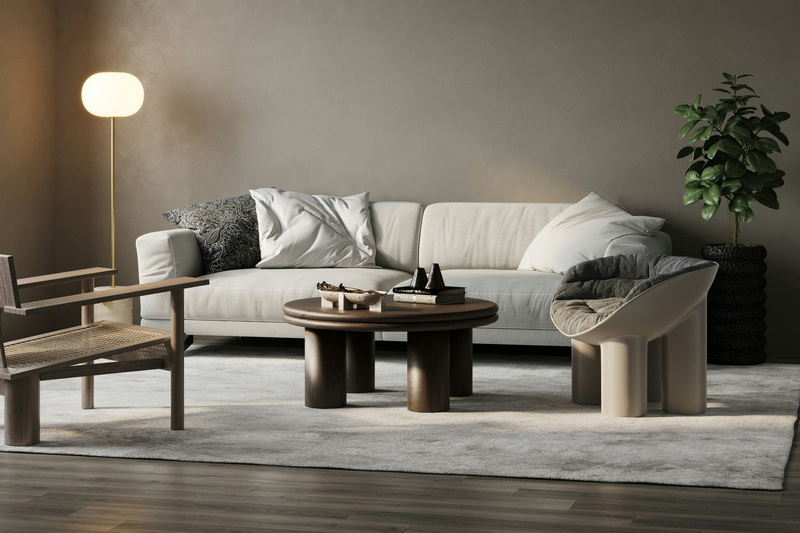English 




Views: 222 Author: Astin Publish Time: 2025-03-23 Origin: Site



Content Menu
● Introduction to Aluminum Foil as a Deterrent
● Why Cats React to Aluminum Foil
● Alternative Methods to Keep Cats Off Furniture
>> 1. Provide Suitable Alternatives
● Creating a Cat-Friendly Environment
● FAQs
>> 1. How Long Should I Keep Aluminum Foil on My Furniture?
>> 2. Why Do Cats Jump When They Touch Aluminum Foil?
>> 3. Are There Other Effective Deterrents Besides Aluminum Foil?
>> 4. How Can I Redirect My Cat's Scratching Behavior?
>> 5. Can Cats Become Desensitized to Aluminum Foil?
Keeping cats off furniture can be a challenging task for many cat owners. Cats are naturally inclined to climb and scratch, and furniture often becomes an attractive target for these behaviors. One common method used to deter cats from furniture is covering it with aluminum foil. However, this method may not be effective for all cats, and it's essential to understand why cats react to aluminum foil and explore other strategies to keep your furniture safe.

Aluminum foil is often used as a deterrent because cats generally dislike the sound and feel of it. When cats step on aluminum foil, they experience sensory overload due to the unfamiliar texture, the crinkling noise it makes, and its reflective surface. This combination of stimuli can cause cats to jump away quickly, making it seem like an effective temporary solution for keeping them off furniture.
However, the effectiveness of aluminum foil as a long-term deterrent is limited. Cats can become accustomed to the sensation over time, and some may even view it as a new toy or challenge. Therefore, relying solely on aluminum foil might not be the best strategy for keeping cats off furniture.
Cats react strongly to aluminum foil due to several factors:
1. Sensory Overload: Cats are highly sensitive to their environment, and the sudden noise and texture of aluminum foil can be overwhelming. This sensory overload triggers an instinctive reaction, causing them to jump away.
2. Unfamiliar Texture: The feel of aluminum foil under their paws is uncomfortable and unfamiliar, contributing to their aversion.
3. Reflective Surface: The shiny, shifting nature of aluminum foil can confuse or unsettle cats, further discouraging them from approaching it.
Despite these factors, some cats may not be deterred by aluminum foil, especially if they are more adventurous or have previously encountered it.
Since aluminum foil may not be a reliable long-term solution, it's crucial to explore other methods to keep cats off furniture. Here are some effective alternatives:
Cats love to climb and scratch, so providing them with suitable alternatives like cat trees or scratching posts can redirect these behaviors away from furniture. Cat trees offer a safe and secure place for cats to climb and observe their surroundings, while scratching posts allow them to maintain their nail health and stretch. It's important to choose scratching posts made from materials that cats prefer, such as sisal rope or carpet, and to place them in areas where your cat spends most of their time.
Deterrent mats, such as those made by K&H Pet Products, are lightweight and make a crinkling noise that most cats dislike. These mats can be placed on furniture to discourage cats from jumping on it. They are easy to clean and can be moved around the house as needed.
Cats dislike having sticky residue on their paws, making double-sided tape an effective deterrent. However, it should be used cautiously to avoid damaging surfaces and to ensure it doesn't leave a sticky residue. It's best to test a small area first to ensure the tape doesn't damage your furniture.
A spray bottle filled with water can be an effective tool for training cats to stay off furniture. Cats generally dislike being sprayed with water, so a quick squirt can deter them from jumping on forbidden areas. This method should be used gently and only when necessary, as it can startle cats if used excessively.
Motion-activated sprays can automatically detect when a cat approaches furniture and release a pet-safe deterrent spray. These sprays often have a citrus scent, which cats tend to dislike. They are convenient and can be placed discreetly around the house.

Redirecting cat behavior involves understanding why cats engage in certain actions and providing them with more appealing alternatives. For example, if a cat is scratching furniture, it may be due to a lack of suitable scratching posts. By placing scratching posts near the furniture and encouraging their use with treats or catnip, you can redirect the scratching behavior.
Additionally, cats often prefer to scratch surfaces that are sturdy and allow them to stretch fully. Providing vertical scratching posts can satisfy this need and help protect your furniture.
Understanding cat behavior is crucial for effectively managing their interactions with furniture. Cats are territorial animals and often mark their territory by scratching. They also have a natural instinct to climb and perch, which can lead them to jump onto furniture. By acknowledging these behaviors and providing appropriate outlets, you can reduce the likelihood of your cat damaging your furniture.
Creating a cat-friendly environment involves more than just deterring cats from furniture. It's about providing them with a space that meets their physical and emotional needs. Here are some tips for creating a cat-friendly home:
- Provide Vertical Space: Cats love to climb and perch. Providing cat shelves or cat trees can give them the vertical space they crave.
- Offer Scratching Posts: As mentioned earlier, scratching posts are essential for maintaining nail health and providing an outlet for scratching behavior.
- Create Hiding Spots: Cats often feel secure when they have places to hide. Cardboard boxes or small enclosures can serve as cozy hiding spots.
- Maintain a Clean Environment: Cats are sensitive to odors and cleanliness. Regularly cleaning litter boxes and providing fresh water can contribute to a happy and healthy cat.
Training your cat to stay off furniture involves consistency and patience. Here are some tips for effective training:
- Set Clear Boundaries: Consistently enforce rules about which furniture is off-limits.
- Use Positive Reinforcement: Reward your cat with treats or praise when they choose to use their scratching posts or stay off forbidden furniture.
- Be Patient: Training takes time, so be patient and persistent.
Keeping cats off furniture requires patience, understanding of feline behavior, and a combination of deterrents and alternatives. While aluminum foil can be an initial deterrent, it is not a reliable long-term solution. Providing suitable alternatives like cat trees and scratching posts, using deterrent mats or double-sided tape, and employing positive reinforcement techniques can be more effective strategies. Remember, every cat is different, so it may take some experimentation to find what works best for your pet.

The duration for keeping aluminum foil on furniture depends on the cat's behavior. Some owners recommend keeping it for about two weeks to reinforce the deterrent effect, but it may need to be reapplied periodically as cats can become accustomed to it over time.
Cats jump when they touch aluminum foil due to sensory overload caused by the unfamiliar sound, texture, and reflective surface of the foil. This combination of stimuli triggers an instinctive reaction, causing them to jump away quickly.
Yes, other effective deterrents include deterrent mats, double-sided tape, spray bottles filled with water, and motion-activated sprays with citrus scents. These methods can be more reliable than aluminum foil for keeping cats off furniture.
Redirecting scratching behavior involves providing suitable alternatives like scratching posts and pads. Place these near the furniture your cat likes to scratch and encourage their use with treats or catnip. This helps your cat associate scratching posts with positive outcomes.
Yes, cats can become desensitized to aluminum foil over time. Some cats may initially be startled by it but eventually become accustomed to the sensation, making it less effective as a deterrent.
[1] https://www.reddit.com/r/CatAdvice/comments/siva2e/how_long_do_i_have_to_keep_aluminum_foil_on_my/
[2] https://forevervets.com/blog/why-do-cats-jump-when-they-touch-aluminum-foil
[3] https://khpet.com/blogs/cats/how-to-keep-cats-off-furniture
[4] https://www.petmd.com/cat/behavior/how-to-stop-cats-from-scratching-furniture
[5] https://www.catster.com/cat-health-care/how-to-keep-cats-off-furniture/
[6] https://tailsofhelp.ca/5-faqs-about-cats-behavioural-health/
[7] https://www.lifewithcats.tv/how-to-keep-cat-off-furniture/
[8] https://catbehavioralliance.com/cat-behavior-faqs/
[9] https://www.thesprucepets.com/cats-and-aluminum-foil-7372379
[10] https://classactcats.com/blog/cats-and-aluminum-foil/
[11] https://northshorevethospital.com/how-to-stop-your-cat-from-scratching-the-furniture/
[12] https://www.tiktok.com/discover/cat-with-aluminum-foil-on-couch
[13] https://www.washingtonpost.com/home/2022/11/01/stop-cat-scratching-furniture/
[14] https://www.reddit.com/r/homeassistant/comments/waqhch/how_can_i_keep_the_cat_off_the_couch/
[15] https://www.tomorrowsleep.com/how-to-keep-cats-off-furniture
[16] https://www.youtube.com/watch?v=NbJQeAQI4NY
[17] https://www.rover.com/blog/how-to-keep-cats-off-counters/
[18] https://www.humaneworld.org/en/resources/how-stop-cats-destructive-scratching
[19] https://www.reddit.com/r/CatAdvice/comments/miaxvo/can_anything_really_stop_my_cats_from_scratching/
[20] https://www.youtube.com/watch?v=KxSIV88q0CQ
[21] https://essentialspetcare.com/how-to-keep-cats-off-the-furniture/
[22] https://www.polywood.com/blogs/outdoor-living/how-to-keep-cats-off-outdoor-furniture
[23] https://www.businessinsider.com/guides/pets/how-to-stop-cat-from-scratching-couch
[24] https://livom.de/en/blogs/news/keep-cats-off-the-sofa-how-it-works
[25] https://www.rspca.org.uk/adviceandwelfare/pets/cats/behaviour
Top Aluminum Furnitures Manufacturers and Suppliers in Czech Republic
Top Aluminum Furnitures Manufacturers and Suppliers in Poland
Top Aluminum Furnitures Manufacturers and Suppliers in Belgium
Top Aluminum Furnitures Manufacturers and Suppliers in Finland
Top Aluminum Furnitures Manufacturers and Suppliers in Denmark
Top Aluminum Furnitures Manufacturers and Suppliers in Greece
Top Aluminum Furnitures Manufacturers and Suppliers in Portugal
Top Aluminum Furnitures Manufacturers and Suppliers in Austria
Top Aluminum Furnitures Manufacturers and Suppliers in Norway
Top Aluminum Furnitures Manufacturers and Suppliers in Sweden
